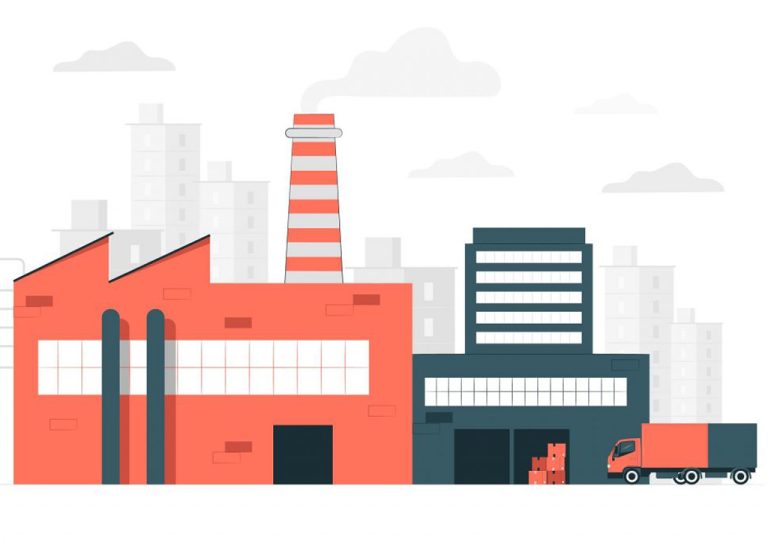Five covid best practices that manufacturing units need to adopt

Kirit Joshi, co-founder, director -Spacewood Furnishers, tells us why
28 May 2021
Even as the country comes to terms with the second wave of the pandemic, one much more severe than the earlier one, the economic impact has already began to be felts across sectors. Right from hospitality, tourism, retail and real estate to even manufacturing, non-covid related pharma and luxury sector have all taken a massive hit. As per a reports by RBI and IMF, the Purchase Managers Index or PMI for manufacturing, dropped to a seven month low, of 55.4, in March 2021, compared to a 58.9 in October 2020, displaying the grim picture. In the midst of this, manufacturing sector is already facing sever challenges, from import restrictions, delays or steep costs, expensive and time consuming supply chains, unavailability or rising costs of raw materials and a slower production.
Considering the above situation, a practical solution to overcome the slump is to ensure a consistent and effective operational process that can help eventually speed up production and eventually help build profits. If India needs to continue its focus on becoming the manufacturing hub of the world, it is important that our manufacturing set-up’s are well equipped and agile enough to meet crisis situations like the ones we are in today. In line with this, listed are 5 covid appropriate best practices that manufacturing units need to adopt to ensure uninterrupted production.
1. Operational restructuring: addressing labour problems and need for adhering to social distancing norms on the shop floor, one needs to reconsider regular operational procedures. Ensuring consistent productivity while managing smaller groups of employees on the floor, can be task but can be achieved if strategically approached. Possible solutions could be restructuring shift timings, in a way that only half the workforce is present on the work floor at a given time, and the other half can come at a later time shift. Additionally, breaking down and dividing the shop floor and assigning smaller groups of say 10-20 people to work demarcated areas, further helps to not only optimise the workflow but also ensure smaller containment groups, in case of a covid positive case. The above measures, in addition to ensuring all norms covid appropriate behaviour are followed, can help optimise the operational processes.
2. Streamline and optimise resources: After streamlining and restructuring operations, it is important to revisit resource optimisation – both human and financial resource. Prioritising and budgeting, identifying leaks or misuse, reassigning budgets to, for eg., immediate needs of medical assistance from say monies assigned for new product development, can help focus on the current challenges and overcome them. Accordingly, other resources, like empty office spaces or parking lots can be optimised to maybe support socially distanced meetings or set up medical testing camps or for HR workshops on how to ensure proper specific behaviour is maintained in the work areas etc.
3. Medical supervision and support: One of the most important aspects of ensuring safety of employees and to adopt appropriate policies and support systems, is to enable proactive testing and easy access to adequate medical guidance and support. Apart from proactive testing for employees, extending testing for their immediate family members, for example, can also be an excellent step to ensure all possible sources of infection can be identified in time and contained!
4. Tech Adoption for efficient workspace: At a time when human resource is precious and sensitive to the infection, technology adoption for basic operations and supported tasks can help in not only ensuring seamless efficacy but also helps reduce the burden on an already scant human resource. Additionally, digitisation also eliminates human error and chances of human interaction which would otherwise lead to spread of infection, and opens up other tasks where human resources could be better deployed. Work from home, management and supervision of logistics and supply chain, automation of basic manufacturing functions, etc., can all help reduce human interaction and ensure seamless manufacturing activity
5. Strict adherence to norms: This is one of the most important aspect of maintaining a minimum disruption of covid related cases and resulting complications. Along with medical supervision and proactive testing, ensuring proper instructions on wearing the right kind of mask, regularly changing or cleaning the mask, and wearing it properly, are all important and the significance of the same needs to be communicated on a regular basis to the employees. Apart from the masks, use of PPE kit, if needed, regular washing of hands, effectively maintaining social distance on the work floor and other basics of supported hygiene behaviour, can all help in the long run, to keep covid positive rates and complications to the minimum.
Adhering to the above mentioned steps across business units, including offices, shop floors and packaging/ storage facilities etc., can help ensure uninterrupted work flow in a consistent manner, while arresting covid related complications among employees. This is also the fastest way to get over the crisis, as a society, so we can start re-building the economy and the nation!
